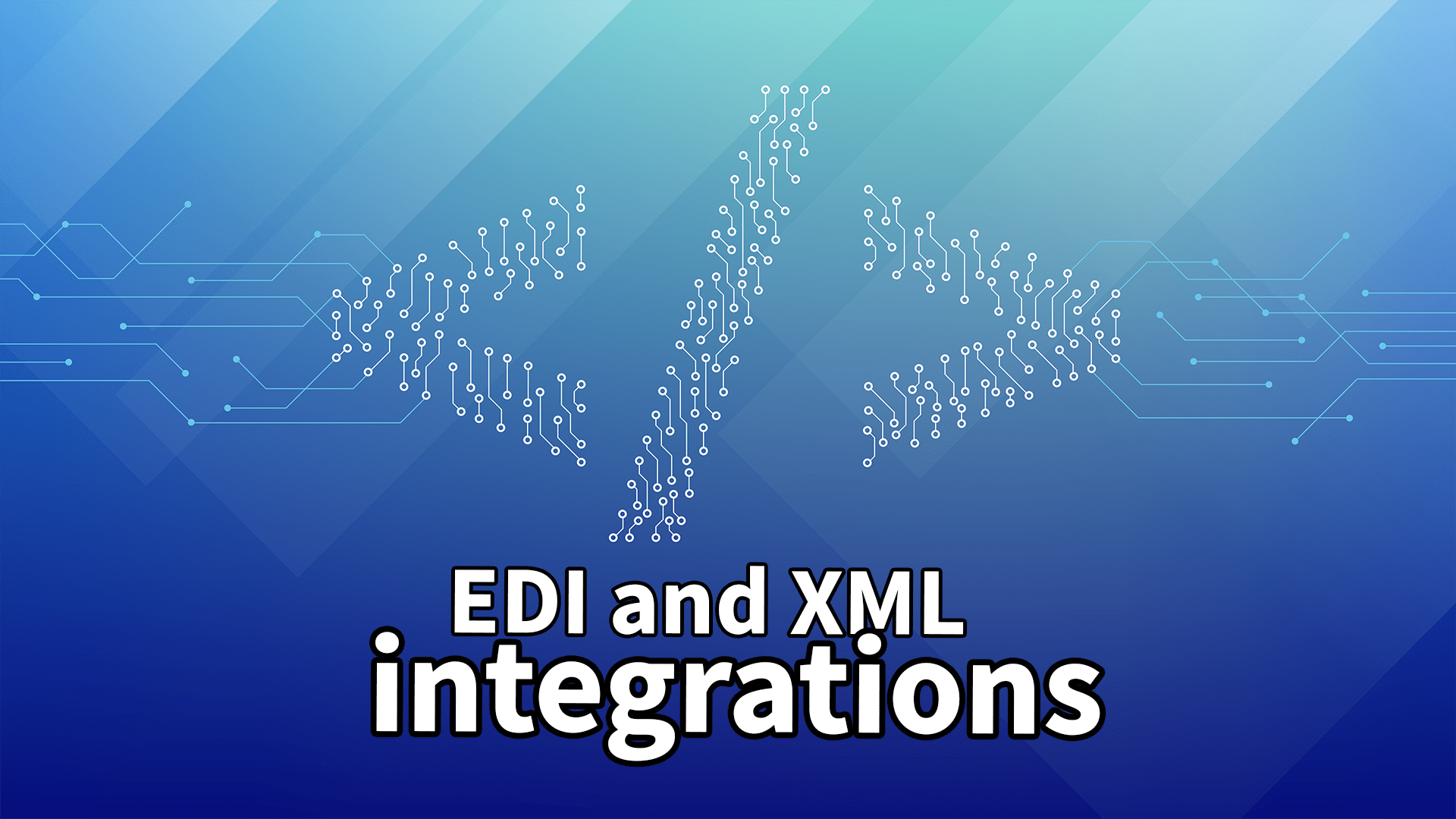Many eCommerce businesses were not prepared for the COVID-19 pandemic. They were still operating out of their warehouses and manually stocking products, only to suddenly encounter a shortage of warehouse employees. Certain states mandated shutdowns for citizen’s safety, and many of these lockdowns are still ongoing.
Despite this logistical nightmare, the demand was still there. People were still ordering online and businesses could not meet the demand, not even Amazon. They have automated business processes and advanced logistics technology, and yet were still having trouble.
Role of EDI & XML Integrations in eCommerce
What does this mean for EDI and XML integrations?
eCommerce business owners are now starting to feel the pain because they had a manual process in place, instead of an automated solution that would reorder inventory once a stock got low. That would have allowed them to streamline their logistics. Now that this pandemic has hit and claimed lives, they feel the pressure.
Consider this case study. We have a client that does $29 million annually and they sell on marketplaces such as Amazon, Walmart, Jet, Wayfair, Overstock, eBay, and the business’s website. In addition, they don’t stock any of the items that they sell. Remember, from a business standpoint, that also means that you don’t have overhead.
How can you do $29 million in sales with no stock and no warehouse?
Dropshipping has been a viable strategy since 2005, but advanced integration and business partners help our client take dropshipping to the next level. Orders come in through their website or the third-party marketplaces. They get automatically sent to the suppliers that the products are assigned to.
The suppliers get these POs. Then the process and ship them to your client, sending back the tracking information through XML and EDI. Your clients get the shipping notification; then the products shipped then are taken and pushed to your accounting software.
With this method, you can have the right metrics to calculate your profitability and financial reporting – EDI documents provide this for you. An average integration looks like this from an eCommerce standpoint.
What happened with COVID, however, is a lot of hospitals and a lot of medical suppliers were struggling because they did not have this automated purchase order or tracking integration. They have to put thousands and thousands of orders manually because of this influx of demand.
Advantages of Implementing EDI & XML Integrations in eCommerce
How do the EDI and XML integrations for eCommerce help businesses have the right eCommerce fulfillment and become more efficient?
The integrations allow for process automation which helps a business scale, increase operations efficiency, and reduce human error. When you configure and tweak these upgrades, you have a well-running machine. That machine, your eCommerce business or operation, now runs itself, essentially. EDI solutions give you that power.
When it comes to automated purchase orders and getting this information from your suppliers, how are managers now going to feed that data onto your website?
Managers need to automate. If you have suppliers feeding you hundreds of thousands of SKUs, how are you going to funnel that data and have it cleanly imported into your site? It can’t be done manually. Automation allows you to scale and clean up eCommerce operations.
Many suppliers and companies were hesitant to integrate at a level like this. Ten years ago, the cloud was new and promising, but nobody knew what a digital cloud was. That has changed; all the software is now on various clouds.
We believe suppliers and distributors will rely on these types of integrations. If Walmart uses all these types of integrations and you want to sell to them, you actually have to integrate your own system with Walmart’s system to maintain the relationship.
How Do eCommerce XML Integration and EDI Integrations Work?
The XML format has a very low learning curve. You can update your products, pricing, and images through an XML. The product side of things involves your catalog. In contrast, the order fulfillment side involves shipping and delivery.
These are the two sections on any operation that you need to pay attention to. An XML takes care of both. EDI is usually used for the order fulfillment side integrations and that has to do with third-party logistics. This means you aren’t tethered to Amazon.
Our firm has worked on five logistics projects. We integrate with many third-party logistics systems. With the integrations for 3PL or third-party logistics, a business ship a container or pallet of products to a service provider, and they do the operation. This maximizes profitability. At Optimum7, we have done many 3PL EDI integrations. We can help you with eCommerce integration and increase profitability.
Imagine if you didn’t have to pay rent, warehouse employees’ salaries, or high shipping fees. These third-party logistics offer such benefits, having better rates with FedEx because they maximize volume. Businesses should run this kind of operation, especially after a pandemic disrupts everyone’s workdays.
When it comes to EDI, there are different formats. With some, you have the 850 purchase order form, 855 purchase order acknowledgment, advanced ship notices, and change requests. With others, you have change acknowledgments and seller order report statuses.
Hospitals and suppliers have sent requests for web developers to do this in a short period of time. We usually take 30 to 60 days to finish an eCommerce integration like this. People ask, “Can you do this in seven days?” The short notice is not impossible but pushes our limits.
We see this movement not only for B2C eCommerce but also for B2B clients. Rapid integrations will become a higher priority to deliver products and services to customers.
EDI Formats and Forms for Orders
- 850 Purchase Order
- 855 PO Acknowledgment
- 856 Advance Ship Notice
- 860 PO Change Request-Buyer
- 865 PO Change Acknowledgement-Seller
- 870 Order Status Report
EDI Formats and Forms for Product & Inventory
- 832 Price/Sales Catalog
- 846 Inventory Inquiry/Advice
- 830 Planning Schedule
- 852 Product Activity Data
EDI Formats and Forms for Warehouse (3PL)
- 940 Warehouse Shipping Order
- 945 Warehouse Shipping Advice
- 943 Warehouse Stock Transfer Shipment Advice
- 944 Warehouse Stock Transfer Receipt Advice
- 861 Receiving Advice/Acceptance
EDI Formats and Forms for Finance
- 810 Invoice
- 820 Payment Order/Remittance Advice
EDI Formats and Forms for Transportation/Logistics
- 753 Request for Routing Information
- 754 Routing Instructions
Other EDI Formats
- 180 Return Merchandise Authorization & Notification
- 977 Functional Acknowledgment FA
The Growing Need of EDI & XML Integration
Where is this technology going now? Will people adopt this quickly or take their time?
People are going to pull the trigger on it a lot faster than they would have 60 days ago. These integrations will take off in B2B and B2C; more businesses will move towards this alternative.
Start looking at EDI and XML integrations to make your operation more efficient and also to be able to allow other people to work with you. This applies whether you are doing any kind of eCommerce operation that’s over a million dollars in annual revenue, supplying raw materials, offering drop-ship services, or running third-party logistics. When you don’t support eCommerce platforms like Shopify, BigCommerce, or NetSuite integration, you’re going to get fewer clients.
Work on these integrations and build your own API. Every single third party logistics system or business needs to have its own API so the communication can happen back and forth with your warehouse or multiple warehouses.
eCommerce EDI / XML Implementations for B2B and B2C Platforms
eCommerce is more important than ever. Either you have B2B or B2C eCommerce platforms you need to have a well-planned supply chain, advanced logistic service and management systems. You might be on BigCommerce, Shopify, Magento, 3DCart, or Miva. EDI and XML integrations can be done with any of these eCommerce platforms.
Integrate Your Technologies, Automate Your Business





